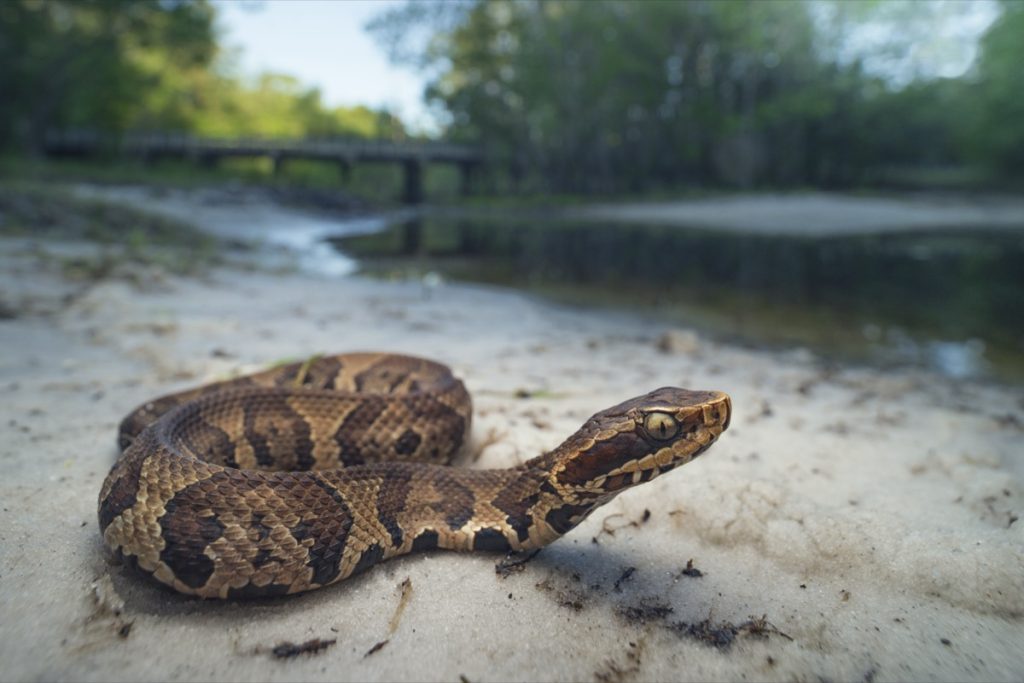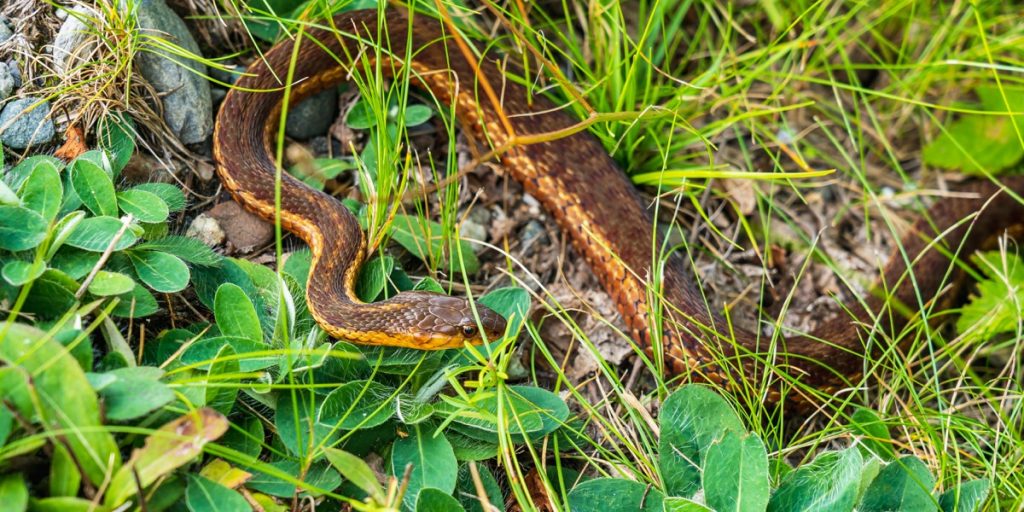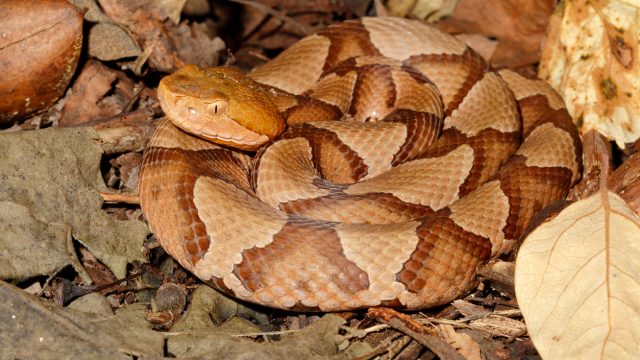It's Snake Season: "Be Aware" in These Areas, Experts Caution
You may be more likely to come across these reptiles in the coming weeks.
Depending on where you live, you may be more aware of the venomous snakes in your area. Sharing a habitat with these reptiles means it's important to respect their vital role in the ecosystem while doing your best to keep yourself and the snake safe from accidental harm. But while it's always a good idea to be mindful of your surroundings when spending time in your yard or exploring the outdoors, experts caution that we're in the midst of a special season for snakes that makes it essential to "be aware" in certain areas. Read on to see which places are particularly risky right now.
READ THIS NEXT: The No. 1 Place Snakes Love to Hide Before They Strike.
There's a reason why you might see more venomous snakes in your area in the coming weeks.

It's not uncommon for many types of animals to become more active in warmer months. But as cold-blooded animals, snakes are particularly sensitive to changes in temperature. The high season for snake bites falls during the milder and hotter seasons, typically beginning in April and stretching through October, according to the U.S. Department of Agriculture's (USDA) Forest Service. However, for the next few weeks, another annual occurrence makes it more likely you'll come across a venomous snake.
"All of our copperheads, our rattlesnakes, and our cottonmouths—they are birthing, and they do birth live babies," Mark Hay, co-founder of Alabama Snake Removers, told local NBC affiliate WBRC. "They don't lay eggs."
After giving birth, mother snakes tend to stay with their newborns as they regain their strength for at least a week, Hay says. But once the young reptiles have conserved enough energy, they move off on their own into nature—and potentially into your path.
Experts caution to "be aware" of snakes in certain areas.

Now that the rugrat reptiles are heading off on their own, experts are spreading the word for people to remain cautious—especially in specific places. And according to a Sept. 24 Facebook post made by public safety officials from the University of Southern Indiana (USI), this includes any terrain that can offer the snakes cover.
"Baby copperheads are born in September and early October. If you are out and about, especially on the USI trails, be alert in grassy areas for their presence," the post cautions. "Copperheads are not aggressive, so they will leave you alone if you leave them alone."
And it's not just grass: the small serpents will look for any low-lying cover. This can include bushes, rock piles, flower pots or planters, or damp areas such as under pets' water bowls or children's toys, according to the Arkansas Game and Fish Commission (AGFC), per local CBS affiliate KFSM-TV.
RELATED: For more up-to-date information, sign up for our daily newsletter.
There are some widely held misconceptions about baby snakes.

Even though they're smaller in size, it's not uncommon to hear the adage that newborn snakes should be considered more dangerous due to their potent venom. But experts push back on the assumption that the reptile youngsters are any more lethal than when they reach their full-grown form.
"The wive's tale goes that a baby snake cannot control their venom, and there's been studies proven that a baby snake, just as an adult snake, can completely control how much venom they dish out every bite," Hay told WBRC.
If you're still wondering if you've come across a newborn snake, there is often a defining characteristic besides being tiny. Young copperheads have grayer colored skin than adults, complete with a greenish or yellow tail they use to help hunt, according to LiveScience. Water moccasin newborns also appear more brightly colored before their skin grows darker with age.
There are ways to reduce the number of potential snakes on your property.

Just because snakes are around doesn't mean there's nothing you can do to stay safe. You can start by making sure your yard isn't enticing to the reptiles by keeping your lawn mown, removing any wood or stone piles in which they can make a home, and ensuring they don't have a steady water supply, Hay suggests. And staying on top of a pest problem can go a long way in keeping snakes away.
"Once you keep the rodents away, the snakes are just not going to have any desire to hang around because, at the end of the day, they don't want to interact with people," said Hay. "They don't want to interact with our pets, our dogs, or our cats."
Still, if you can't rid your lawn of mice or rats, other experts point out that the reptiles can actually play a pest control role. "Any kind of snake, of course, they eat rodents so they keep the rodent population in check. They fall in line with arachnids and some of the other less popular creatures that are very much a part of our environment even though they might not get the popularity contest," Eve West, a ranger at New River Gorge National Park and Preserve in West Virginia, told local CBS affiliate WVNS.
And so long as you're careful, you can be appreciative of your timid reptile neighbors. "We walk past them all the time and never know it," Ben Morrison, a South Carolina–based herpetologist who works for the Amphibian and Reptile Conservancy, told Garden & Gun. "They are part of our landscape across the South, and I always think that the first thing people should do when they see one is admire it, and feel lucky."






















